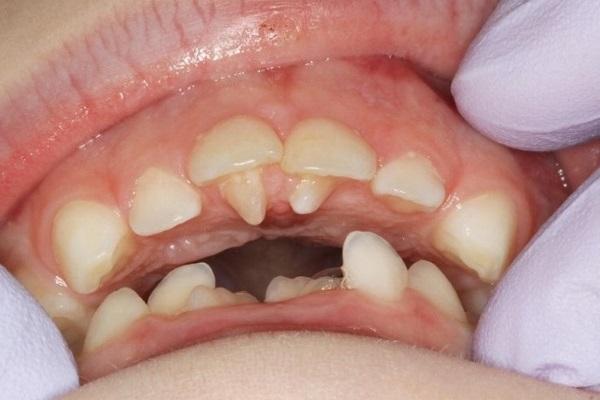Researchers have found that combination chemotherapy and radiation therapy, and especially head and neck radiation, increase the risk of dental abnormalities in children who have had cancer.

It has previously been found that people who have been treated for cancer may have abnormalities in the development of their teeth. However, to date, no studies have examined the impact of any particular case of such therapy on dental health. Filling a gap in their recent study, scientists from Israel found that dental anomalies in children who had cancer differed depending on the type of cancer treatment given. The findings may help identify children treated for cancer who are at increased risk of developing dental problems.
During the study, scientists examined the permanent molars of 121 people who received anticancer therapy before the age of 18. All participants underwent general annual examinations, including an oral examination, between 2017 and 2019. The researchers assessed the prevalence of dental anomalies in participants according to the types of treatment, i.e. chemotherapy, radiation therapy and surgery, type of disease, and age at the time of treatment.
Anomalies in the development of teeth were observed in 46% of participants, a total of 9% of the teeth. Abnormalities included hypodontia and microdontia, root development and damage to the enamel structure, excessive retention of primary teeth, impaction, premature eruption, decreased temporomandibular joint mobility, inability to open the mouth, and jaw and facial deformities.
Participants who received chemotherapy without radiation had a prevalence of 43%, those who received radiation had a prevalence of 52%, and those who received radiation to the head and neck had a staggering 60%. The study also reported that female participants had a higher incidence of microdontia, while male participants had more decayed teeth.
In addition, deformed teeth were more common in patients who received only chemotherapy at age 6 or younger. The researchers did not find any particular chemotherapeutic agent that could cause side effects and cause adverse dental effects.
“Treatment of childhood cancer is a success story of modern medicine,” said study lead author Dr. Elinor Halperson, a research fellow at the School of Dentistry at the Hebrew University of Hadassah in Jerusalem, in a press release. “Effective treatments for previously incurable diseases are now available. However, children appear to be particularly vulnerable to the harmful effects of radiation therapy and chemotherapy. This growing number of children and young people who have had cancer requires significant attention from the medical and dental communities as determine future risks,” she added.
Dental care for cancer patients is especially important
Discussing how anti-cancer treatments can increase the risk of dental anomalies, Dr. Halperson noted that tooth morphogenesis and calcification is a continuous, complex process that begins in utero and continues for 14-15 years. The permanent incisors and first permanent molars begin to mineralize around the time of birth, but mineralization of the permanent teeth is often completed only years later. Abnormalities in tooth formation and proliferation usually result in failure in tooth development, while abnormalities during histodifferentiation result in abnormal enamel and dentin structure.”
In light of their findings, the researchers emphasized the importance of dental care for people treated for cancer before the age of 6, especially if it was combined with radiation therapy to the head or neck.
Dr. Halperson believes that the results may help develop international guidelines for the monitoring and treatment of children with dental anomalies, as well as help determine the risks of adverse dental consequences for specific treatments and at certain stages of a child's development. Further studies are also needed in large medical centers to obtain more samples for research, which should be focused on identifying the risks of adverse dental outcomes associated with treatment.
